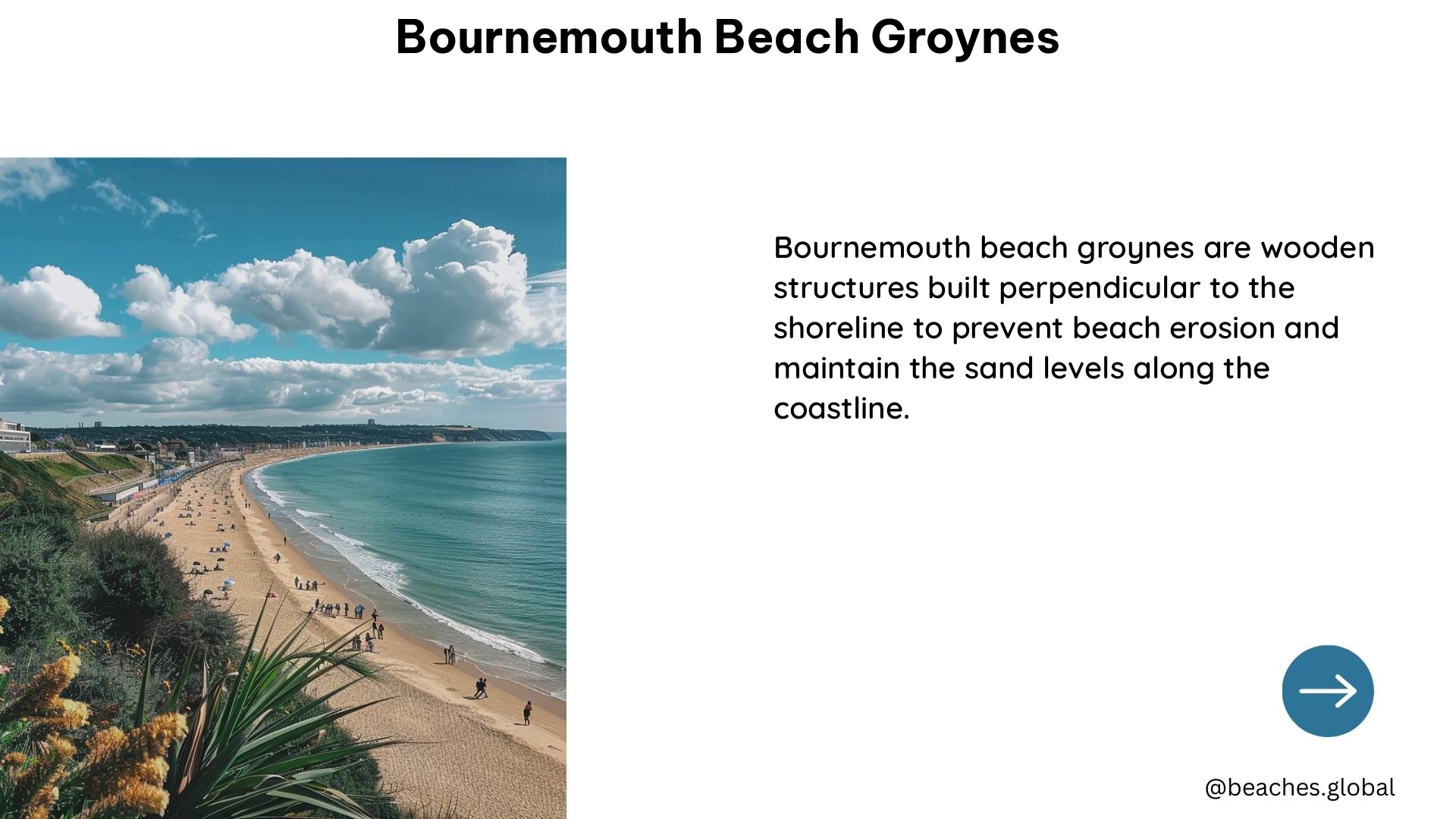Bournemouth’s seafront is a significant tourism asset, with numerous activities and events taking place on the promenade and beach. The beach groynes are essential for protecting this area from coastal erosion and maintaining the sand beach as an amenity. This article provides a comprehensive look at the Bournemouth Beach Groynes, focusing on their construction, materials, costs, and other quantifiable details.
Construction and Materials of Bournemouth Beach Groynes
The Bournemouth Beach Groynes are made of timber, primarily using tropical hardwood and recycled planking. The timber groynes consist of 17 rows of timber planking, made up of two different types of timber planks: Greenheart and Ekki. Greenheart is sourced from northeast South America, while Ekki comes from West Africa. A recent trial groyne has been constructed using FSC Basralocus with piles between 10 and 13 meters.
Cost and Funding for Bournemouth Beach Groynes

The cost of replacing the groynes is part of a £33 million budget set aside by the Environment Agency for the Poole Bay Beach Management Scheme, which runs from 2015 to 2032. The scheme aims to protect the coastline from flooding and erosion, making it more resilient to predicted sea level rise for the next 100 years.
Timeline and Progress of Bournemouth Beach Groynes Replacement
The Bournemouth Beach Groynes replacement project began in October 2023 and is expected to be completed by the end of March 2024. The project involves replacing three groynes on East Cliff Beach using a combination of new tropical hardwood timber and recycled planking. Each groyne measures between five and seven meters deep and is roughly 75 meters in length, with each one comprising 225 planks of timber.
Unique Perspective: Groyne Renewal and Repurposing
In a unique approach to groyne renewal, some of the harvested wood from Bournemouth’s recent works has been transported to Ventnor on the Isle of Wight to fortify a new sea defence. This reused wood, renowned for its durability, will be employed in Ventnor for the subsequent decade before the installation of a more permanent sea wall.
Safety Measures and Access during Bournemouth Beach Groynes Replacement
During the groyne replacement, the promenade will remain open, but the length of beach where work is taking place will be fenced off for safety reasons. Sand becomes very unstable when it is excavated around the groynes, so people should keep out of these zones, even at low tide. Dogs are to be kept on leads at all times. Once the work is finished, restrictions will remain in place until the sand dries out and becomes more compact and stable underfoot.
References:
– https://www.suttles.co.uk/about-us/our-activities/bournemouth-beach-groynes
– https://www.bbc.com/news/uk-england-dorset-67031010
– https://www.bcpcouncil.gov.uk/news-hub/news-articles/groyne-renewal-on-east-cliff-beach
– https://www.bbc.com/news/uk-england-dorset-68679457
– https://www.bbha.co.uk/groynes
